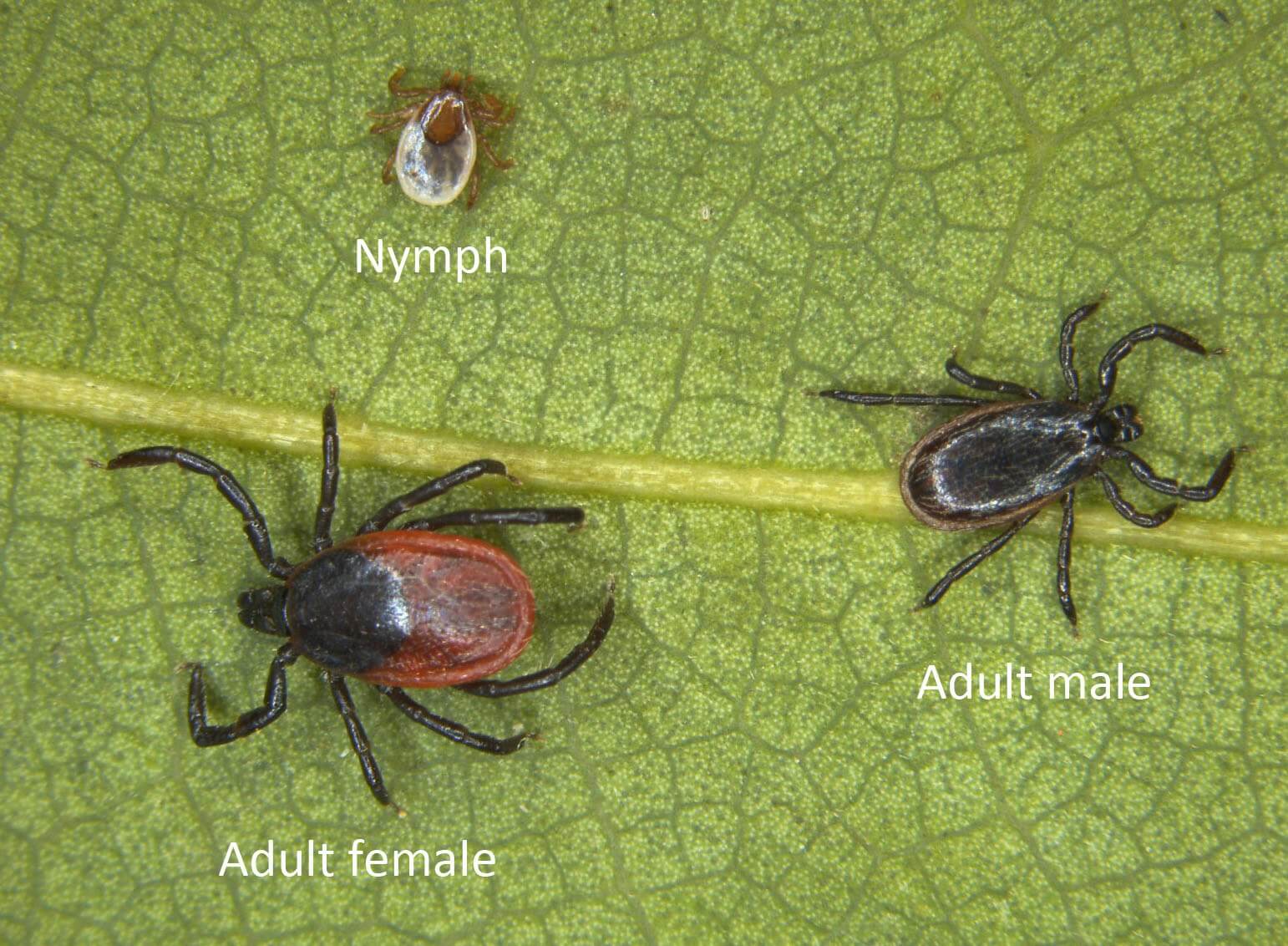Officials from the Marin/Sonoma Mosquito and Vector Control District (District) are encouraging the public to take preventive measures before, during, and after being in tick habitat to protect against ticks and tick-borne diseases.
According to the U.S. Centers for Disease Control and Prevention, Lyme disease is the most prevalent vector-borne illness in the United States.
Ticks are active year-round in Marin and Sonoma counties. The most commonly found ticks in Marin and Sonoma counties are the American dog tick, Pacific Coast tick, and the western black-legged tick. All three of these ticks can transmit a variety of tick-borne diseases, but only the western black-legged tick can transmit Lyme disease.
Adult western black-legged ticks (Ixodes pacificus) are commonly found in the fall through early spring, while the tiny nymphs are most active in the spring and early summer. Both stages of this tick can transmit Lyme disease.
“Tick nymphs are extremely small, about the size of poppy seeds, and are particularly active during this time of year,” explained Dr. Kelly Liebman, the Scientific Programs Manager for the Marin/Sonoma Mosquito and Vector Control District. “It’s crucial to thoroughly check yourself and your pets for ticks after spending time outdoors.”
Ticks can be found in grassy, brushy, or wooded areas, especially along sides of trails. Adult ticks wait on the tips of vegetation for people or other animal hosts to pass by, while nymphs are commonly found in leaf litter, on logs, and on mossy rocks.
The District regularly conducts tick surveillance in various parks and public lands across Marin and Sonoma counties. Collected ticks are tested for Borrelia burgdorferi, the bacterium responsible for Lyme disease. According to collection data, the average infection rate of adult western black-legged ticks is 1.78 % and the average infection rate of the nymphal stage is 4.11%.
Follow these three simple steps to help minimize exposure to ticks and tick-borne diseases:
- REPEL – Apply an EPA registered insect repellent such as DEET (at least 25%), IR3535, oil of lemon eucalyptus (OLE) or picaridin. Treat clothing and equipment with permethrin. Wear light-colored long-sleeved shirts and long pants.
- INSPECT – Periodically conduct tick checks on yourself, your children, and your pets during and after being in tick habitat.
- REMOVE – Remove attached ticks promptly and correctly. Use a fine-tipped tweezer, grasp the tick as close to the skin as possible, and pull straight out. Remove clothing and place in the dryer on high heat for 10 minutes to kill ticks before washing. Showering after being outdoors will help identify attached ticks and wash off those that have not yet attached themselves.
Lyme disease may produce a wide range of symptoms. If you believe you have been exposed to the bacterium that causes Lyme disease, contact your health care provider. If Lyme disease is left untreated, the infection may spread to other parts of the body, with many patients experiencing severe pain and swelling associated with arthritis. Untreated patients may also develop chronic neurological problems.
Western black-legged tick
Adult western black-legged ticks (Ixodes pacificus) have eight legs and are flattened in their unfed state. Unfed females are approximately 1/8 of an inch long, with a dark reddish abdomen and black dorsal plate. While feeding on a host, adult females expand in size to over 3/8 of an inch. Male western black-legged ticks are uniformly brownish-black in color and slightly smaller than females. Unlike females, males do not grossly expand in size when feeding.
Unfed tick nymphs are about the size of a poppy seed and have eight legs.
Tick larvae are even smaller than nymphs, have only six legs, and are unlikely to be noticed by the casual observer.
Life cycle & habitat:
May contain: label, text, word, and plot
The life cycle of the western black-legged tick takes a minimum of 3 years. Females lay eggs in late winter or early spring in soil or leaf litter. Eggs begin to hatch in mid to late summer. Once hatched, the larvae remain inactive until late winter or early spring, when they begin seeking hosts (birds, small mammals and lizards). Larvae generally do not attach to humans.
Larvae molt into nymphs in mid-summer and remain inactive until late winter or spring, when they begin seeking hosts (usually birds, small mammals and lizards). Nymphs can be found in leaf litter, on mossy rocks, logs and tree trunks, and will attach to humans.
Nymphs molt into adults in late summer and begin seeking hosts in the late fall (usually medium to large-sized mammals). Adult ticks are often encountered in grassy, brushy or wooded areas, especially alongside trails. Adult ticks wait on the tips of vegetation for a potential host, and will attach to humans. They do not fly, jump, or fall out of trees.
After a tick grasps onto a host, it searches for a suitable location to attach to the skin. Once attached, it secretes a cement-like substance that helps it stay firmly in place while it feeds. Generally, the longer the tick stays attached, the higher the risk of disease transmission. An adult tick may remain attached for several days, after which it will drop off the host.
Females can lay up to 1,000 eggs and die after depositing the eggs in soil or leaf litter.
Impact on human health:
Nymphs and adults are known to attach to humans and have been implicated in the transmission of Lyme disease and anaplasmosis to humans in California. Western black-legged ticks have also been found to carry Borrelia miyamotoi, which is closely related to the bacterium that cause tick-borne relapsing fever.
Nymphs are easily overlooked due to their small size, and have a higher rate of infection with the Lyme disease bacterium than adult ticks in some parts of California.








Be First to Comment